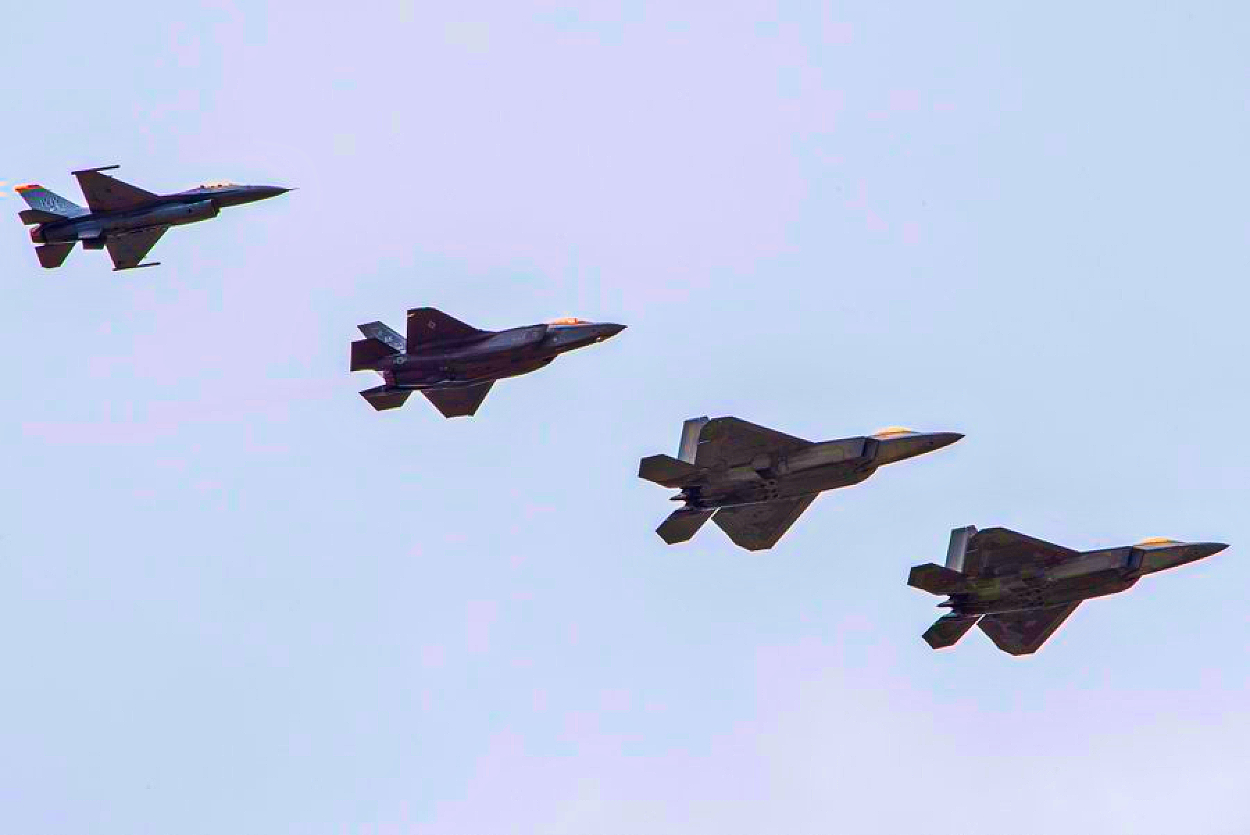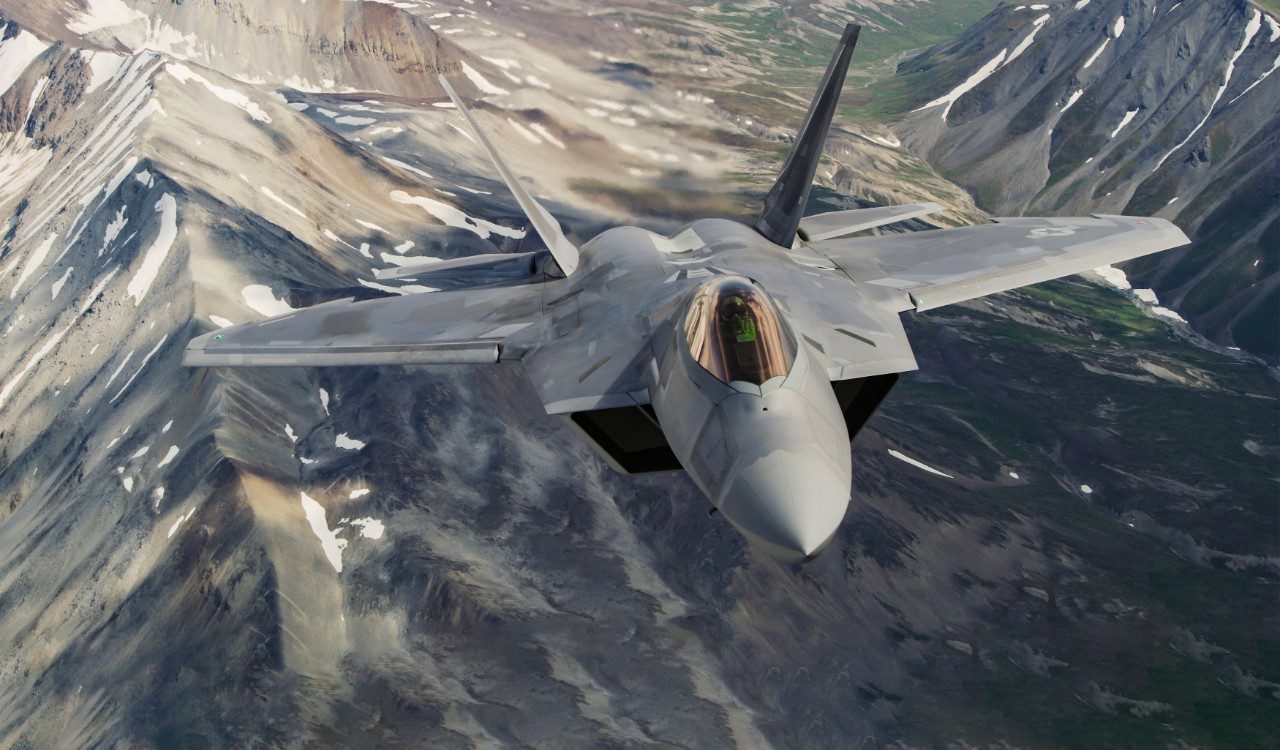After a four-year pause, the Arctic Thunder Air Show returned to the Joint Base Elmendorf-Richardson in Alaska. Held over the last weekend of July 2022, the event enthralled the audience as it featured a magnificent display by the deadly trio of US Air Force fighters.
As part of the ‘Arctic Thunder’ Air Show held on July 30 and 31, an F-35 Lightning II fighter jet, an F-16 Fighting Falcon, and two F-22 Raptors flew in a formation at Joint Base Elmendorf-Richardson. The photograph of the stunning display was shared on Twitter by the F-35 Joint Program Office.
The US Air Force describes the show as one of the world’s premier aerial demonstrations. The Arctic Thunder features the US Air Force’s Air Demonstration Squadron, the “Thunderbirds,” and the F-22 Raptor Demonstration Team.
A @usairforce F-35, F-16 Fighting Falcon, and two F-22 Raptors, fly in formation during the @ArcticThunderAK at Joint Base Elmendorf-Richardson, Alaska.
This biennial event is one of the premier aerial demonstrations in the world. pic.twitter.com/PugeEwPBLn
— F-35 Lightning II Joint Program Office (@theF35JPO) August 10, 2022
In another flight, an F-35 Lightning II took to the skies in formation with an F-22 Raptor during the Arctic Thunder Open House on Friday, July 29, 2022, at Joint Base Elmendorf-Richardson.
The F-35s are based at the Eielson Base in Alaska. Together with the Raptors at JBER, Alaska is being set up as the largest concentration of fifth-generation fighters.
In the 2022 edition of the air show, the other participants included the C-17 Globemaster III Demonstration Team, which demonstrated the capabilities of one of the major cargo and personnel workhorses of the Department of Defense.
The Open House also had performances from diverse ground displays. In addition, the Joint Forces Demonstration included Alaska’s own Air National Guard and US Army Alaska paratroopers to show how the JBER military operates together in harmony and coordination.

While several demonstrations and aerial maneuvers mesmerized the audience, the demo where the F-16, F-22, and the F-35 flew together stood out.
The F-22 and the F-35 are the world’s finest fifth-generation fighter jets with stealth capabilities, whereas the F-16 is one of the lightest and most maneuverable single-engine combat aircraft.
These three aircraft, alongside the F-15 EX, are the bedrock of the US Air Forces’ combat readiness.
The “4+1” plan of the USAF calls for the F-22 as one leg, followed by the Next-Generation Air Dominance fighter; the F-35 as the “cornerstone” of the fleet as another; the F-15E/EX as a supplement to carry massive armaments as a third; and F-16s as force-capacity maintenance as a fourth.
The host organization for Alaska’s Elmendorf Air Force Base, where the air show was held, is the 3rd wing. It is the largest unit of the Eleventh Air Force. An Air Expeditionary Force lead wing with 6,700 people, and F-15C, F-15E, E-3, C-130, and C-12 aircraft are trained and outfitted by the wing. The base is also home to F-22 Raptors.
The F-22 Raptors had also been training with the F-35 fighters and F-16s based in Eielson AFB, Alaska, for the Red Flag exercise.
This is especially significant due to Russia’s interest in Alaska and the latter’s strategic location from which these fifth-gen fighters can take off from Russia and China.

F-22 Raptors Chase Away Russian Jet
On August 10, the North American Aerospace Defense Command (NORAD) tweeted that it had detected, tracked, and identified Russian surveillance aircraft entering and operating within the Alaskan ADIZ on two different occasions, EurAsian Times reported.
A day later, another similar flight of Russian surveillance aircraft was reported.
The NORAD Command also stated that the Russian surveillance aircraft did not enter the American or Canadian sovereign airspace. The Alaska ADIZ is a buffer zone with thousands of square miles that isn’t sovereign airspace and where Russian jets are legally allowed to fly.
Three times this week @ANRALCOM detected, tracked and identified a Russian aircraft entering and operating within the Alaskan Air Defense Identification Zone (ADIZ), a buffer zone surrounding ??&?? that #WeHaveTheWatch of 24/7/365. https://t.co/tewin16N3z
— North American Aerospace Defense Command (@NORADCommand) August 11, 2022
However, entering it would allow a plane to enter American airspace in a short period. NORAD usually dispatches the F-22 Raptors from the 3rd wing to intercept Russian surveillance aircraft accompanied with aerial refueling KC-135 Stratotanker aircraft and E-3 Sentry airborne early warning and control aircraft.
“NORAD employs a layered defense network of satellites, ground-based radars, airborne radar, and fighter aircraft to track and identify aircraft and inform appropriate actions. We remain ready to employ several response options in defense of North America & Arctic sovereignty”, said NORAD in a tweet.
In 2020, the number of such interceptions touched 60. However, the maneuvers have come down after Moscow launched the invasion of Ukraine in February this year.
A defense official told VOA that the US F-22 fighter jets intercepted the second Russian aircraft upon entering the airspace while following the protocol.
The official added that both entries involved the same type of Russian surveillance aircraft. Speaking to VOA earlier this year, Senator Dan Sullivan of Alaska said the US military has had to “scramble” more fighter jets to intercept Russian military aircraft “probably more than any other time since the mid-1980s.”
- Contact the author at sakshi.tiwari9555@gmail.com
- Follow EurAsian Times on Google News




